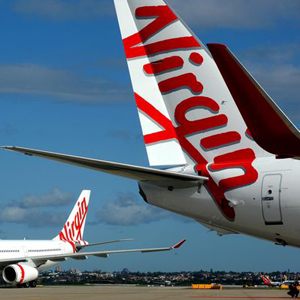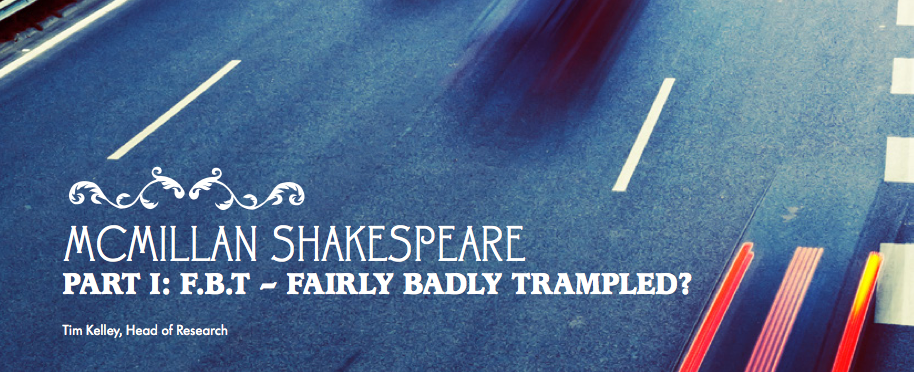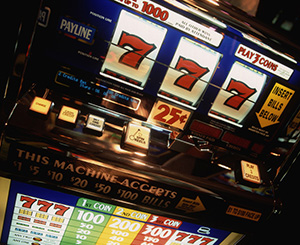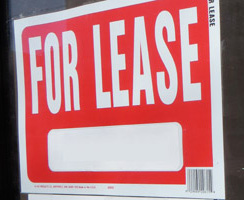Companies
-

The fortunes of IRESS
Ben MacNevin
August 9, 2013
IRESS is a company that we love at Montgomery Investment Management and it’s been frustrating to watch the company’s share price trade at a material premium to our estimate of its intrinsic value. But has its latest acquisition presented an entry opportunity? continue…
by Ben MacNevin Posted in Companies, Insightful Insights.
- 5 Comments
- save this article
- POSTED IN Companies, Insightful Insights
-

Virgin Australia Holdings Limited
David Buckland
August 7, 2013
Virgin Australia (ASX: VAH) has said that it expects to post a pre-tax loss for the year to 30 June 2013, excluding one-off costs, of between $30m and $50m. continue…
by David Buckland Posted in Companies.
- 4 Comments
- save this article
- POSTED IN Companies
-
McMillan Shakespeare – Part 3
Tim Kelley
August 2, 2013


This is the third in a series of articles we have posted on McMillan Shakespeare (ASX: MMS). The first two articles addressed the valuation framework we used to assess MMS in the context of regulatory uncertainty (read part one here); and some comments on how we think about the risks attaching to an investment that may have binary outcomes (either very good or very bad) (read part two here). continue…
by Tim Kelley Posted in Companies, Insightful Insights.
- 6 Comments
- save this article
- POSTED IN Companies, Insightful Insights
-
Further thoughts on McMillan Shakespeare
Tim Kelley
July 30, 2013


We posted last week an article that set out some of our thoughts on McMillan Shakespeare (ASX: MMS), and the logic that led us to add to our position following the precipitous price drop last week. continue…
by Tim Kelley Posted in Companies, Insightful Insights.
- 31 Comments
- save this article
- POSTED IN Companies, Insightful Insights
-

Cochlear: keeping an ear to the ground
Tim Kelley
July 29, 2013

Further to our previous posts on possible advances being made by Cochlear’s competitors, we were pleased recently to gain some insight from a call hosted by Deutsche Bank with a large implant clinic in the US. continue…
by Tim Kelley Posted in Companies.
- 3 Comments
- save this article
- POSTED IN Companies
-
F.B.T. – Fairly Badly Trampled?
Tim Kelley
July 25, 2013


Readers will be well aware of the controversy surrounding the Federal Labor government’s proposed changes to FBT legislation and the potential impact of these changes to businesses linked to car leasing and salary packaging. As owners of one of the businesses most directly in the firing line for these changes – McMillan Shakespeare – we have been following the debate with particular interest. continue…
by Tim Kelley Posted in Companies, Insightful Insights.
- 26 Comments
- save this article
- POSTED IN Companies, Insightful Insights
-

Caterpillar Inc.
David Buckland
July 19, 2013
Caterpillar’s 125,000 staff awoke this morning to hear that Jim Chanos, president and founder of Kynikos Associates, was on a short selling crusade. continue…
by David Buckland Posted in Companies, Insightful Insights.
- save this article
- POSTED IN Companies, Insightful Insights
-

Is $5.00 unreasonable for Ainsworth?
Russell Muldoon
July 17, 2013
Ainsworth Game Technology (ASX: AGI) is not a business that will appeal to all investors. Problem gambling is a genuine concern, but for many a night at the casino is a valid form of casual entertainment. Spending my pocket money on video games all those years ago held similar enjoyment while having a similar impact on my own finances. continue…
by Russell Muldoon Posted in Companies, Insightful Insights.
- 4 Comments
- save this article
- POSTED IN Companies, Insightful Insights
-

Re-Leasing Value
Ben MacNevin
July 15, 2013
Many companies struggle when their core market reaches maturity. Some managers attempt to increase earnings through acquisitions, while others may choose to return capital to investors. But mature companies possess an asset that can be very valuable if effectively managed, and FlexiGroup is an example of a company that is attempting to use this particular asset to full effect. continue…
by Ben MacNevin Posted in Companies, Insightful Insights.
- save this article
- POSTED IN Companies, Insightful Insights
-

China Rongsheng Heavy Industries is in serious financial trouble
David Buckland
July 10, 2013
China Ronsheng Heavy Industries, the biggest Chinese-based shipbuilder outside the State’s control, represents everything that is good and bad in that country. continue…
by David Buckland Posted in Companies, Insightful Insights.
- 4 Comments
- save this article
- POSTED IN Companies, Insightful Insights